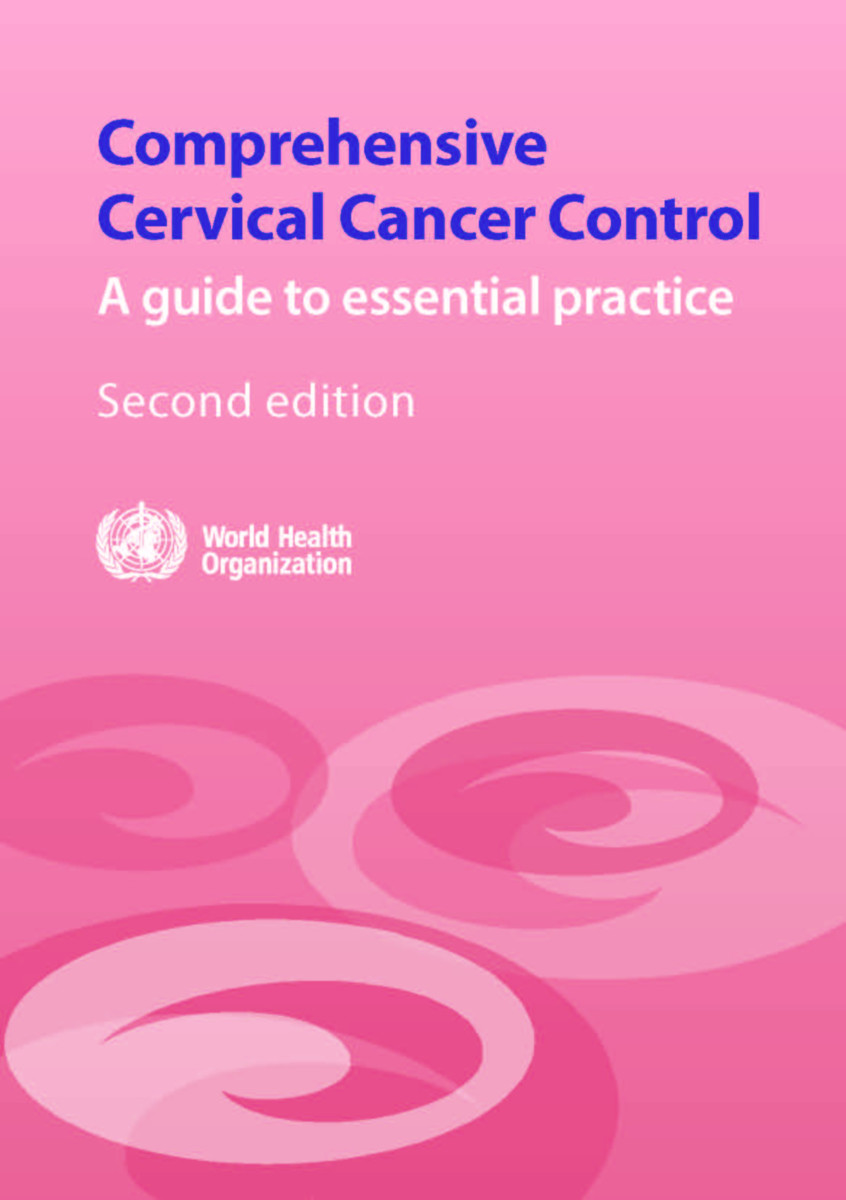Comprehensive Cervical Cancer Control Edition 2
A Guide to Essential Practice
- Publisher
World Health Organization - Published
11th November 2016 - ISBN 9789241548953
- Language English
- Pages 404 pp.
- Size 5.5" x 8.25"
This publication gives a broad vision of what a comprehensive approach to cervical cancer prevention and control means. In particular, it outlines the complementary strategies for comprehensive cervical cancer prevention and control, and highlights the need for collaboration across programs, organizations and partners. This new guide updates the 2006 edition and includes the recent promising developments in technologies and strategies that can address the gaps between the needs for and availability of services for cervical cancer prevention and control.
In the last few years, there has been an emergence of ground-breaking new strategies in cervical cancer prevention and control. Because such strategies require evidence-based evaluation for decision-making in clinical practice and program planning, a World Health Organization (WHO) Steering Committee and a group of invited experts met in Geneva, Switzerland, in September 2010, to ensure that the WHO's guidance on cervical cancer continues to encompass all the relevant technologies and strategies.
This edition of the guide has two new chapters: Chapter 2: Essentials for cervical cancer prevention and control programs and Chapter 4: HPV vaccination. One chapter has been newly organized: Chapter 5: Screening and treatment of cervical pre-cancer. All other chapters have been thoroughly updated and edited as needed.
This guide aims to assist those responsible for providing services aimed at reducing the burden of cervical cancer on women, their communities and health systems. It focuses on the knowledge, best practices and communication skills needed by health-care providers working at community and primary and secondary levels of care to offer quality services for prevention, screening, treatment and palliative care for cervical cancer: the full continuum of care.
The guide is intended primarily for health-care providers in health centers and district hospitals who deal with women's health and/or adolescent's health, but it may also be of interest to community-based and tertiary-level providers. Providers and managers at the sub-national level whose responsibilities may include program planning would be interested in Chapter 2 on program essentials, which covers implementation, monitoring and evaluating, and/or supervising and training other health-care providers. National-level decision-makers will find updated evidence-based information in this guide on what works in cervical cancer prevention and control programs, which may be of use as a basis for updating their own guidelines and protocols.
1: Background
2: Essentials for cervical cancer prevention and control programs
3: Community mobilization, education and counselling
4: HPV vaccination
5: Screening and treatment of cervical pre-cancer
6: Diagnosis and treatment of invasive cervical cancer
7: Palliative care
World Health Organization
World Health Organization is a Specialized Agency of the United Nations, charged to act as the world's directing and coordinating authority on questions of human health. It is responsible for providing leadership on global health matters, shaping the health research agenda, setting norms and standards, articulating evidence-based policy options, providing technical support to countries, and monitoring and assessing health trends.


